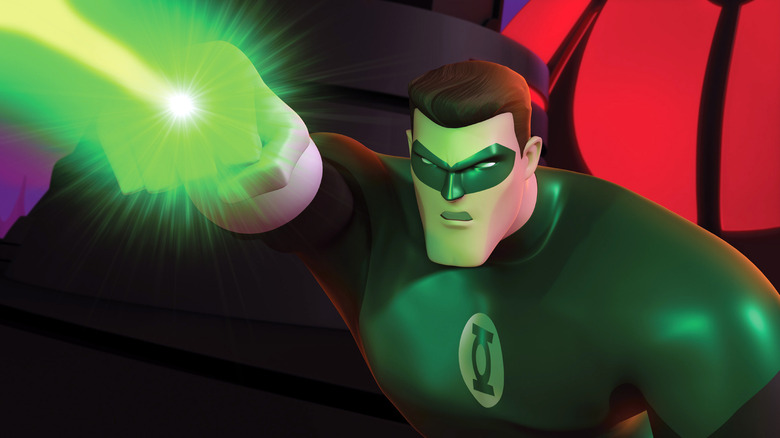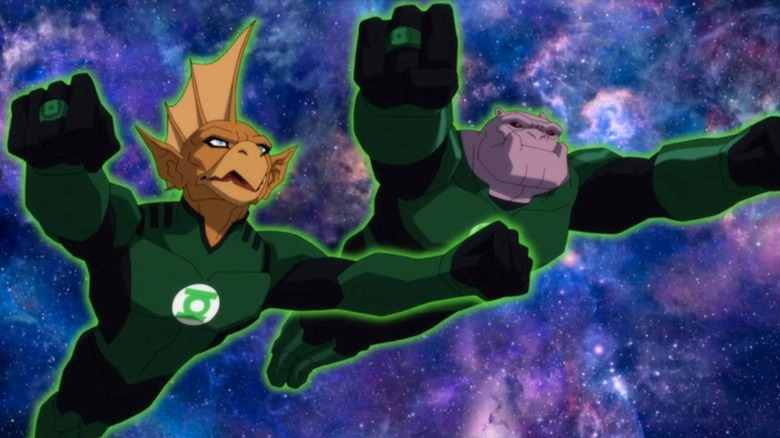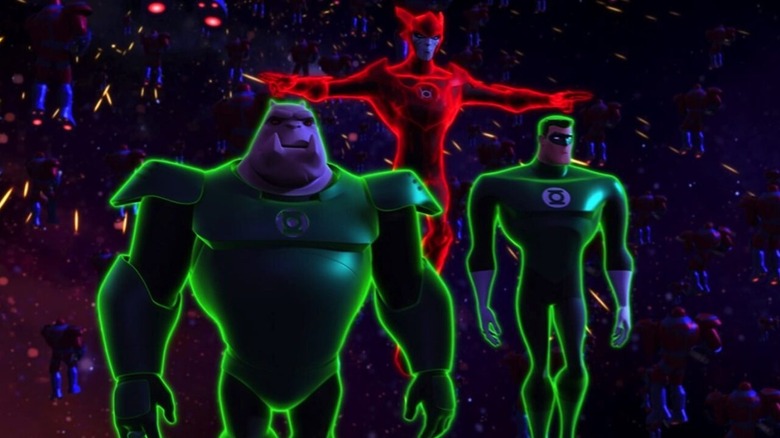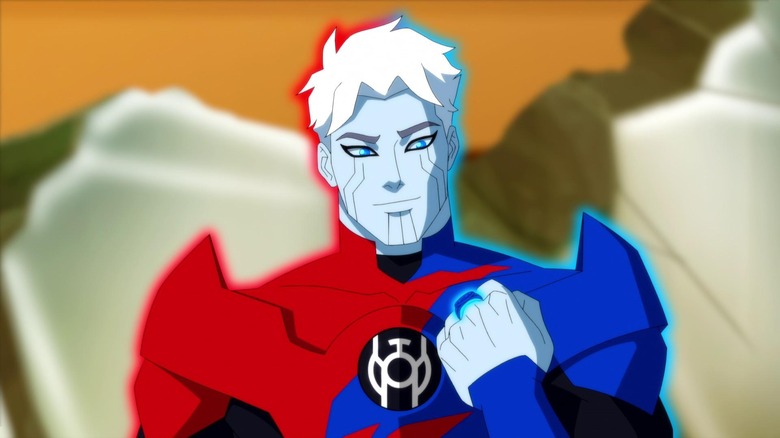The Canceled Green Lantern Show That Young Justice May Have Made Canon
"Young Justice" has long excelled at building an expansive superhero universe that feels lived in, with dozens upon dozens of characters from all corners of the DC Universe. This season, the show has greatly incorporated Jack Kirby's "Fourth World" into the story, showing the cosmic side of the DC universe that the live-action movies refuse to dive into, while also introducing the Legion of Super-Heroes.
But the latest episode, "Encounter Upon the Razor's Edge!" did the impossible. It not only reintroduced the Green Lantern Corps after years of only briefly teasing Hal Jordan and John Stewart, but it also brought back an entire show from the void of cancellation.
The return of the lanterns
The main plot of the latest story arc involves Rocket attending a peace summit between the New Gods, the Justice League, and the Green Lanterns, with Kilowog and Tomar-Re representing the latter. They are not the most surprising characters to appear here since they are two of the most popular nonhuman lanterns, and have made appearances in many different mediums. What is surprising is that before attending the summit, the two encounter a Blue Lantern, none other than former Red Lantern Razer from the "Green Lantern: The Animated Series."
Airing alongside the second season of "Young Justice" on Cartoon Network, "Green Lantern: The Animated Series" was hailed as Bruce Timm's return to TV after "Justice League Unlimited," and the first Green Lantern CG animated series. Much like "Batman: The Animated Series" capitalized on the success of Tim Burton's movies and skipped an origin story in order to go straight to expanding the world of the character, "Green Lantern" skipped an origin story and went straight to an intergalactic sci-fi epic, hoping to capitalize on the 2011 Ryan Reynolds movie.
Across its 26 episodes, the show explored the conflict between the Green and Red Lanterns, which threatens to eliminate all life in the universe.
A world of possibilities
The most fascinating aspect of that show was how it explored the different Lanterns in the emotional spectrum, including not only the Red Lanterns but also blue, orange, and the Star Sapphires. Much like "Young Justice," the "Green Lantern" cartoon also used a serialized format to tell a story of corruption and war, showing the mistakes of the Guardians of the Universe, and even bringing in the Anti Monitor as a villain, years before the Arrowverse tried the same.
While the show's portrayal of a massive world with different planets, cultures, and systems was interesting in and of itself, what makes "Green Lantern" stand out is the character of Razer himself. A show-original character, he started out as a Red Lantern filled with rage over the loss of his wife, but quickly realizes his mistake and spends the entire show living to try and make up for his sins.
It's fitting that the show was co-created by Giancarlo Volpe, who previously worked on "Avatar: The Last Airbender" because this show learns all the right lessons from Zuko's redemption arc in making Razer earn his redemption the hard way. The show ends on a huge cliffhanger, with Razer embarking on a quest to find his true love, while a Blue Lantern ring of hope chases after him.
Sadly, the show was canceled for poor toy sales (the same excuse "Young Justice" got) and the failure of the movie. Still, that didn't stop voice actor Jason Spisak from teasing fans throughout the years, like reciting the Blue Lantern oath the day after the finale aired, or poking fun at the cancelation of both "Green Lantern" and "Young Justice" by voicing along to a Tumblr fan art where Wally West (who he also voiced) and Razer discussed the cancellation of their shows, hoping to one day see their stories continued
A hopeful return
"Young Justice" brings back not only the characters, but the team that made "Green Lantern," with co-creators Jim Krieg and Giancarlo Volpe writing the episode, Christopher Berkeley directing, and Sam Liu also returning to storyboard the episode. Even Spisak returns to voice Razer, and it feels like no time has passed. He infuses the character with the weight of everything that happened in the original show and the years of disappointment over not being able to get a proper conclusion to his story.
While Kilowog and Tomar-Re are busy with the summit, Razer, who is now a Blue Lantern, has apparently lost all hope after failing over and over to find the character Aya over the years. Even if you haven't seen "Green Lantern," or haven't rewatched it in the 9 years since it ended, the episode makes it easy to understand the emotional history of the characters, as well as the emotional stake when Razer embraces his rage again and returns to being a Red Lantern.
After fighting the New God Metron and destroying half of New Genesis, Razer realizes the error in his ways and learns to hope once again, which is when the episode does the coolest possible thing — giving Razer his Blue Lantern while he's still wearing his red ring. The result is a very cool magical girl-style transformation where Razer's costume fuses and becomes half red and half blue, a cathartic moment of resolution to a decade-old story.
Does this mean the entire show is canon? Well, kind of. "Young Justice" co-creator Greg Weisman said the "Green Lantern" show is "adjacent" to the canon of "Young Justice," much like "Catwoman: Hunted." This means the writers can draw from that show whenever they want without being obligated to take it all and retroactively fit both timelines. Though it is not the perfect resolution fans may have hoped for, it is still a miraculous thing. When Razer says goodbye to Kilowog and sets out to search for Aya again, the scene has a much more hopeful tone, because "Young Justice" has done the impossible over and over, and it could do it again.
"Young Justice" is streaming on HBO Max, with new episodes premiering on Thursdays.



